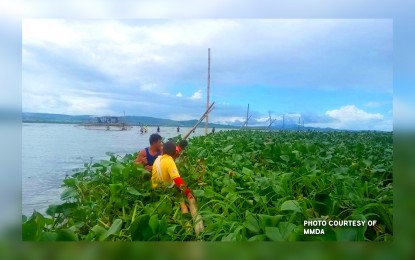
MANILA – The country’s largest inland body of water, the Laguna de Bay, is at risk of further proliferation of free-floating water hyacinth, an invasive alien species (IAS), an official of an attached agency of the Department of Environment and Natural Resources (DENR) said on Wednesday.
Jamella de Castro, DENR-Ecosystems Research and Development Bureau (ERDB) science research specialist, said the worsening water pollution from continuing direct discharge of waste and untreated wastewater into Laguna de Bay will promote water hyacinth’s proliferation.
“Water hyacinths thrive in water with poor quality,” she said at the sidelines of the ERDB-led IAS Conference 2019 in Manila.
She noted that these invasive plants multiply fast as well as threaten native aquatic biodiversity, ecosystems, and composition of Laguna de Bay.
“It’s a major environmental problem in Laguna de Bay and other lakes,” she said.
According to the International Union for Conservation of Nature (IUCN), the world’s largest and most diverse environmental network, invasive alien species are “plants or animals that are introduced by man, accidentally or intentionally, outside of their natural geographic range into an area where they are not naturally present.”
“They are often introduced as a result of the globalization of economies, for instance by trade via ships, shipment of wood products infested with insects, or the transport of ornamental plants that then establish themselves into the wild and spread,” the IUCN noted.
De Castro said portions of the South Bay, including Laguna province’s San Pedro, Binan, Sta. Rosa, Cabuyao and Calamba cities, as well as Los Baños and Bay municipalities, have the potential to drive the water hyacinth proliferation.
She noted the said areas lack of sanitation and wastewater treatment facilities and discharge waste water directly into the bay.
“The discharges are polluting South Bay’s waters, creating the condition conducive to water hyacinth’s continuing growth and spread there,” she said.
De Castro urged the local government units these areas to help prevent further proliferation of water hyacinth, like the passing of ordinance limiting quantity of fish feed dispensed in Laguna de Bay.
“Those with septic tanks there must have these desludged every five years,” she said.
She said there is a need for more research on Laguna de Bay's water hyacinth problem to better map out strategic solutions. (PNA)
